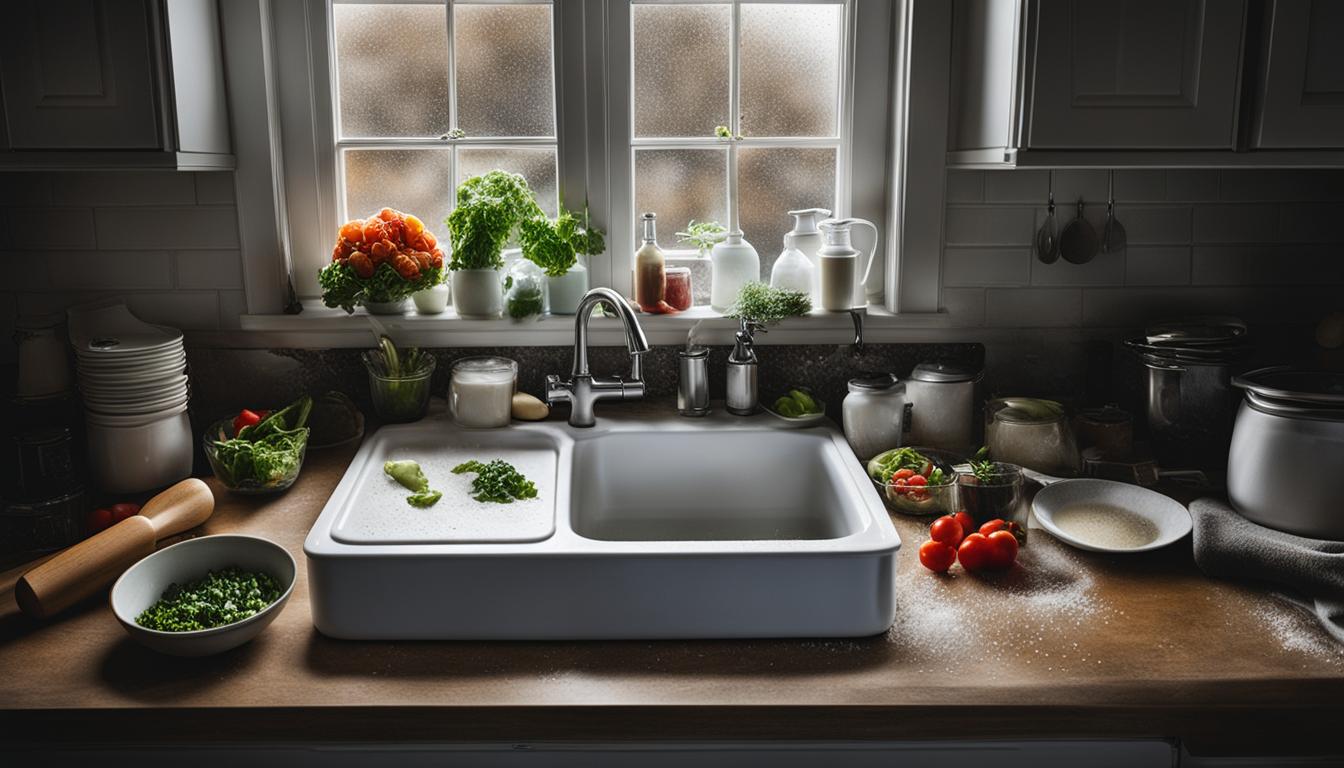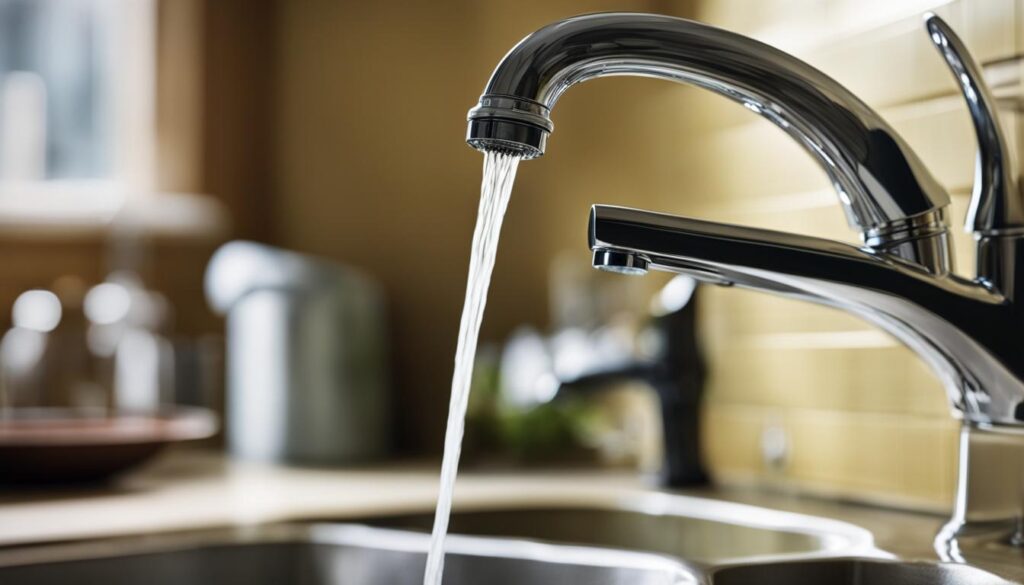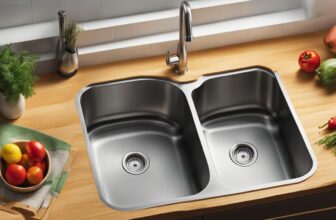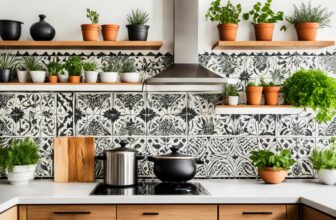No Water in Kitchen Sink But Elsewhere? Fix It!

Are you experiencing the frustration of no water in your kitchen sink while everything else seems to be working fine? Don’t worry! It’s a common issue that can be fixed with a few troubleshooting steps. In this guide, we’ll walk you through the possible causes of no water in your kitchen sink, how to fix it and get the water flowing again.
Key Takeaways
- Having no water in your kitchen sink is a common issue that can be fixed with a few troubleshooting steps.
- The first step is to check the water supply valve, which may have been accidentally closed.
- If the water supply valve is not the issue, check the faucet and aerators for debris or mineral buildup.
- Replacing faulty components can help restore water flow in the kitchen sink.
- If the issue persists, seeking professional help from a plumber may be necessary.
Check the Water Supply Valve
If you’re experiencing a water problem in the kitchen sink, the first thing you should check is the water supply valve. This valve controls the flow of water to the sink and is usually located under the sink. Make sure that the valve is fully open. If it’s partially or completely closed, it could be the reason why the sink is not getting water.
If the valve is already open, try turning it off and on a few times to see if it’s stuck. A stuck valve can also cause the sink to have no water; this happens when the knob or lever that controls the valve becomes jammed or blocked. Turning it off and on should help get it moving again.
Checking the water supply valve is usually the easiest and quickest fix for a kitchen sink not getting water. However, if this doesn’t solve the problem, it’s time to move on to the next troubleshooting step.
Inspect the Faucet and Aerators
If you still have no water in your kitchen sink but everywhere else seems to be working correctly, the faucet and aerators might be the root cause. Over time, mineral buildup and debris can accumulate and clog the aerator, which can restrict the water flow to the sink.
To check for a clogged aerator, remove it from the end of the faucet and clean it thoroughly. Once you’ve cleaned the aerator, reattach it to the faucet and test the water flow. If the aerator was the issue, the water should now flow freely.
Alternatively, the faucet itself might be causing the issue. Check for any damaged or worn-out parts, such as the O-ring, cartridge, or valve. Replace any faulty components to restore water flow to your sink.

No water in kitchen sink but everywhere else? Often, a simple fix like cleaning the aerator or replacing worn-out parts can get your water flowing again in no time.
Conclusion
Experiencing a lack of water in your kitchen sink can be frustrating, but it’s a common issue that can be easily fixed. Don’t panic if you face this situation. Follow the troubleshooting steps provided in this guide and check the water supply valve, faucet, and aerators for any potential issues.
If you’re unable to identify and fix the problem, do not hesitate to seek professional help from a plumber. They have the expertise and tools necessary to diagnose the problem and provide a suitable solution. Remember, don’t let this minor setback disrupt your daily routines – get your kitchen sink flowing again in no time!
FAQ
Why is there no water in my kitchen sink, but everywhere else is fine?
If you’re experiencing a lack of water in your kitchen sink while everything else in your house is working fine, there are a few possible causes. The first thing to check is the water supply valve under the sink to make sure it is fully open. If the valve is open and water still isn’t flowing, the issue may lie with the faucet or aerators. Cleaning or replacing the aerator, as well as inspecting the faucet for any damage or worn-out parts, can help restore the water flow.
How do I check the water supply valve for my kitchen sink?
To check the water supply valve for your kitchen sink, locate the shut-off valve usually found under the sink. Ensure that the valve is fully open. If it is already open and there is still no water flow, try turning it off and on a few times to ensure it’s not stuck. Sometimes, the valve may have been accidentally closed, causing the lack of water in the kitchen sink.
What should I do if the faucet and aerators are causing the lack of water in my kitchen sink?
If the water supply valve is not the issue, you’ll need to inspect the faucet and aerators. Start by removing the aerator from the end of the faucet and cleaning it thoroughly. Mineral buildup or debris can often clog the aerator, restricting water flow. Additionally, check for any damaged or worn-out parts in the faucet that may be causing the problem. If necessary, replace any faulty components to restore water flow to the kitchen sink.
What should I do if none of the troubleshooting steps fix the lack of water in my kitchen sink?
If you’ve tried checking the water supply valve, inspecting the faucet, and cleaning the aerator but still have no water in your kitchen sink, it may be necessary to seek professional help from a plumber. They will have the expertise to diagnose and resolve any underlying plumbing issues that may be causing the problem. Don’t let this minor setback disrupt your daily routines – a professional plumber can help get your kitchen sink flowing again in no time.







